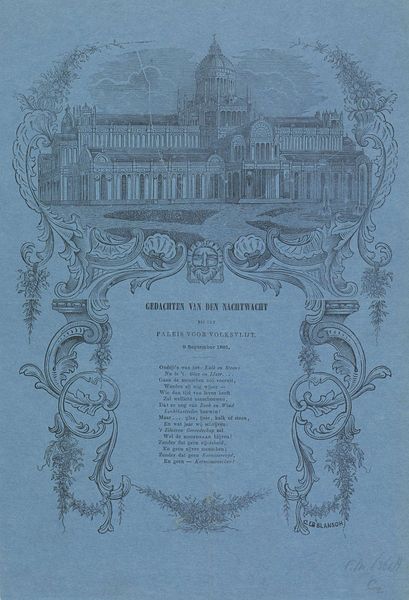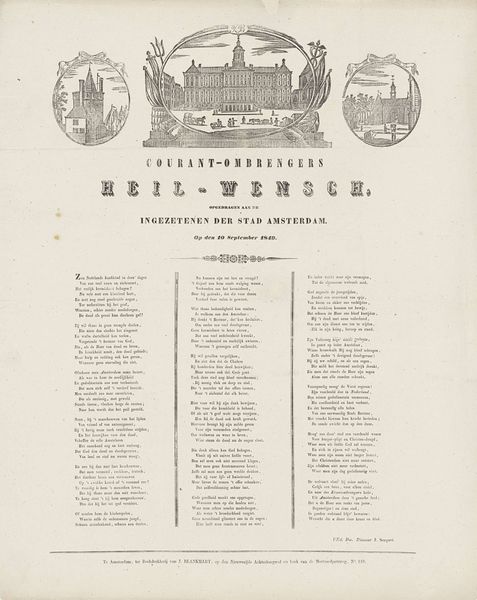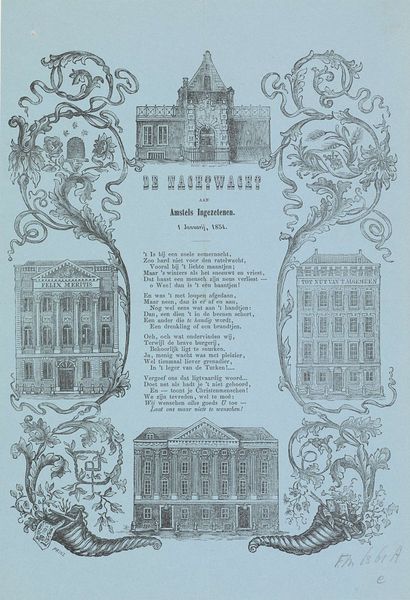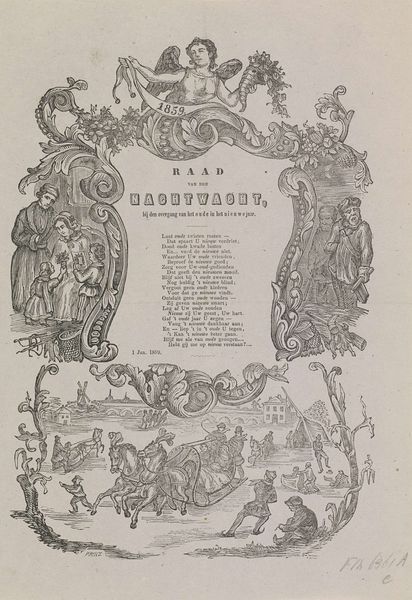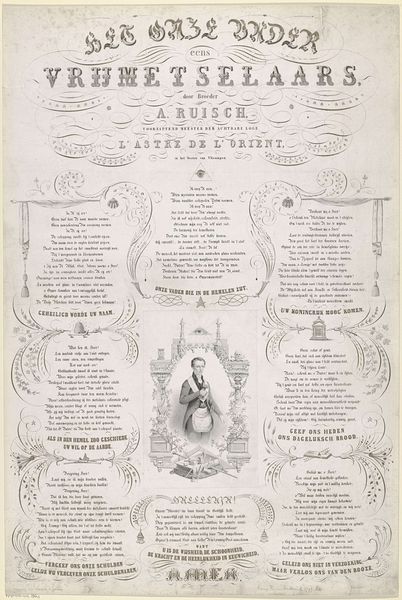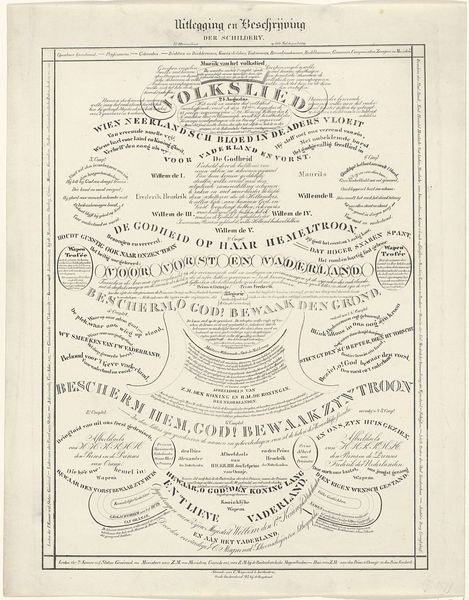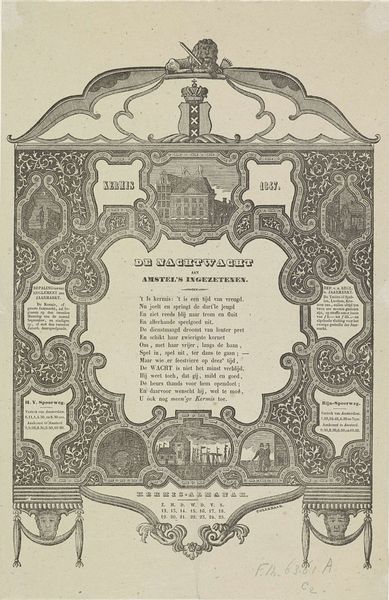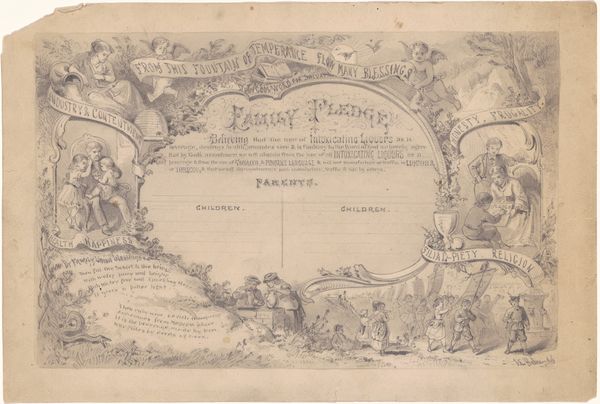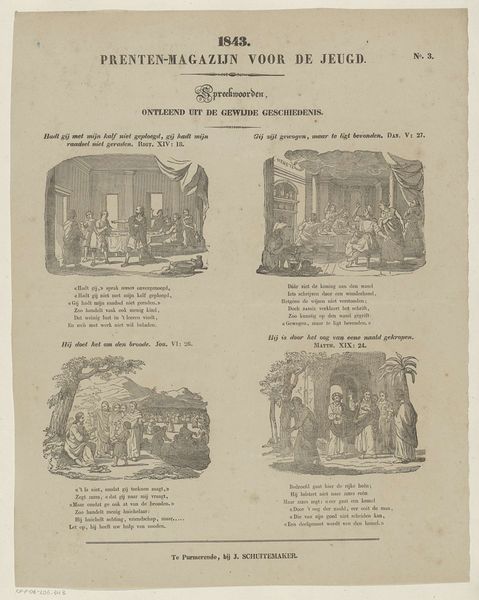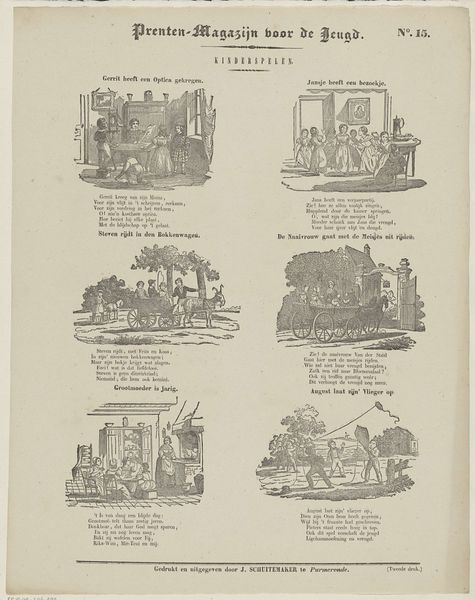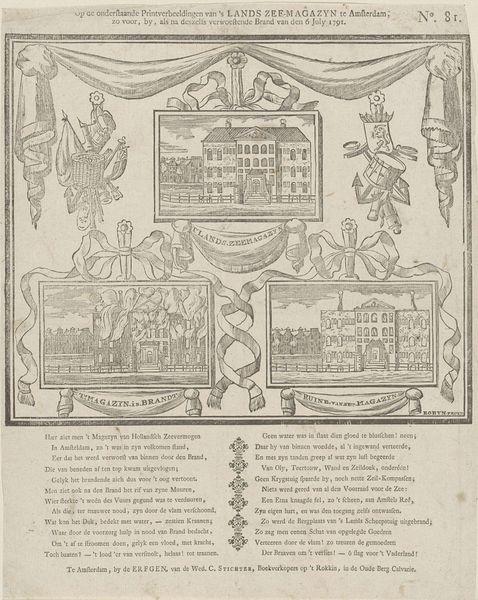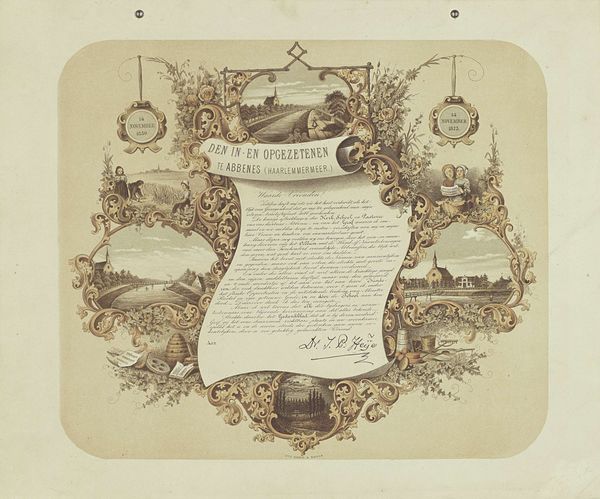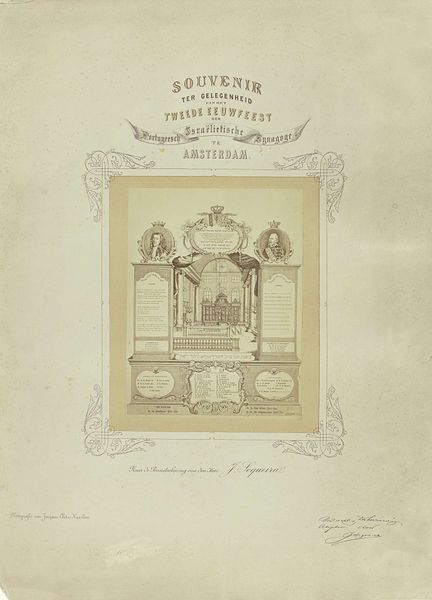
Dimensions: height 313 mm, width 218 mm
Copyright: Rijks Museum: Open Domain
This print, made in 1853 by Friedrich Robert Prinz, depicts a scene framed by ornate, stylized foliage. These decorative elements, rich in acanthus leaves and blossoming vines, evoke a sense of abundance and celebration, fitting for a festival announcement. The frame itself becomes a symbol, echoing classical motifs found in Roman and Renaissance art. Such foliage reappears across centuries, think of the borders in illuminated manuscripts or the decorative garlands adorning ancient temples. It represents a desire to recapture a golden age. Yet, in this festive print, the classical allusions are intertwined with scenes of everyday life—the buildings, a stage—revealing a fascinating tension between high art and popular culture. This tension is not new; it reflects the eternal human struggle to reconcile our aspirations with our earthly existence. The psychological weight of these symbols, passed down through generations, continues to resonate, engaging us in a deep, subconscious dialogue between past and present. And so, the foliage evolves— from sacred symbol to celebratory motif, illustrating the cyclical nature of cultural memory and its power to transform meaning across time.
Comments
No comments
Be the first to comment and join the conversation on the ultimate creative platform.
